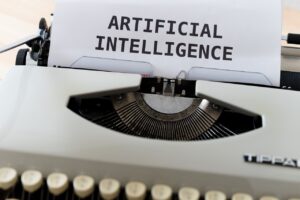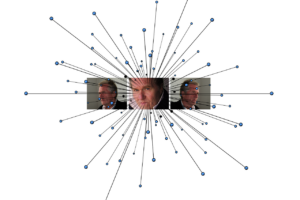
Whether or not you have a patent application in the works, you should be aware of the implications of this technology. In this article, we will discuss some of the most common issues that you will face when developing and implementing Artificial Intelligence (AI) applications. We will also explore the various ways in which you can protect your intellectual property and your business.
Artificial Intelligence Patent Applications
Whether you are developing an AI/ML-based invention or trying to obtain patent protection for an existing application, there are a number of important considerations you should keep in mind. These include separating the training phase from the execution phase, providing a patentable hook, and identifying the elements of the structure that are patentable.
For a machine learning model to be patented, it must meet the technical character test. This requires a substantive correlation between the abstract conceptual elements and the technical elements. For example, an unsupervised learning model may require a processing unit to perform complex calculations. It also must be deployed in a commercial setting.
The United States Supreme Court has determined that AI-based inventions that employ computer processes are eligible for patent protection. However, this determination is only applicable to those inventions that meet certain requirements.
For instance, a neural network classifier system uses physical data to train a classifier. It can be trained using a training dataset or through back propagation. The training process is typically carried out by a computer program.
Although the patent specification is generally broken into major components of the model, you may need to break it down further. This can help to prevent split infringement issues.
In addition to describing the method or procedure in detail, you should also provide a detailed description of the main embodiment. This may include a physical device such as a computer, or a special hardware used in the training and execution phases.
In addition, you may want to incorporate as much physical structure as possible into your invention. This can obviate some of the issues associated with 35 U.S.C. Section 101.

Ways to avoid Alice rejection during examination
Here are some best practices for avoiding an Alice rejection in patent drafting:
- Identify the Invention: Clearly define the invention and distinguish it from any abstract ideas or concepts.
- Provide Specific Details: Provide specific details about the invention, including how it works and how it is different from prior art.
- Avoid Overly Broad Claims: Avoid overly broad claims that could be seen as directed to an abstract idea. Instead, focus on specific aspects of the invention that are new and innovative.
- Emphasize Technological Advancement: Emphasize the technological advancement of the invention and how it solves a specific problem or provides a new benefit.
- Provide Examples and Use Cases: Provide examples and use cases that demonstrate the practical application of the invention and how it solves a specific problem.
- Use Claims That Are Directed To A Specific Implementation: Use claims that are directed to a specific implementation of the invention rather than abstract concepts.
- Provide Examples on How Your Claimed Invention Improves Machine Performance: Read the USPTO Guidance on navigating the Alice test and can help ensure that your claims are properly drafted.
By following these best practices, you can improve the chances of your patent application being approved and avoid an Alice rejection. However, it’s important to note that the Alice test is complex and that the outcome of each case is highly dependent on the specific facts and circumstances.

Examples of improving processor performance
- Cache memory management techniques that improve the efficiency of data retrieval and processing.
- Improved algorithms for task scheduling and resource allocation that increase processor utilization.
- New techniques for pipelining and parallel processing that speed up data processing.
- Innovations in processor architecture, such as the use of multiple cores or specialized processing units, that improve performance.
- Improved techniques for data compression and encoding that reduce the amount of data that must be processed, resulting in faster processing times.
- Improved error correction techniques that reduce the number of processing errors and improve overall processor performance.
These are just a few examples of how innovation in processor performance could potentially be eligible for a patent under Section 101. However, it’s important to note that the outcome of each case depends on the specific facts and circumstances, and a comprehensive patent eligibility analysis should be performed by a qualified patent attorney to determine the eligibility of a particular invention.
Machine Learning
Creating a patentable AI/ML-based invention can be expensive and time-consuming. A company that wants to protect its key products may want to consider structuring the application with special considerations. The goal is to come up with an inventive and commercially viable invention that will stand the test of time.
A machine learning model can be an effective way to reduce the amount of prior art search required. It also can help improve task performance. However, the most important challenge is explainability. While a human domain expert would probably be able to tell you exactly how to do the above, a machine may not.
A machine-learning-based invention is also an excellent way to identify areas that need improvement. A system can automatically identify these areas and augment the specimen data set to address them. This can be done without interfering with a company’s ability to prevent direct infringement.
A more fundamental AI invention would be to develop improved models. These may be the real key to obtaining patent protection.
The best way to demonstrate the benefits of your core-AI invention is to include a complete description of your invention. This includes the structure, functions, and details required to obtain commercially useful protection.
The most important part of your AI/ML-based invention is to describe in detail what it does and what it does not do. It should also provide a concise and informative explanation of the hardware requirements. This is especially true for a machine-learning-based invention.
In the end, an AI/ML-based invention should be a customer driver for the company. It should be a novel approach within the industry. The invention must also be useful to customers and internally at the company.

Searching the Prior Art
Performing an effective prior art search is an important element of patent prosecution. There are several factors that can impact the success of such a task.
The most important is defining the search statement. This involves a clear understanding of the scope of the application and the novelty of the claimed invention.
There are many techniques and strategies to achieve this goal. One common method is the use of an Examiner Automated Search Tool. It is a web-based system that is used to search for patents.
Another approach is to apply machine learning to the prior art search. This strategy can be self-validating, which is helpful in a time-sensitive search.
AI-based prior art search assistance may also reduce the cost of prosecution. This strategy could also help overcome the limitations of traditional keyword searches.
Some people have suggested that a new AI-based patent track model is needed. This model would not only revolutionize many ambiguous elements of patent law, it could maintain the incentive for innovative technologies to be patented. The model would include expedited examination, protection for creative AI systems, and shorter patent lifetimes. It will also incorporate a depository requirement for AI working models. This will increase the transparency of AI-generated inventions and provide a basis for evaluating the utility of an AI solution.

Patenting AI Solutions
Obtaining a patent for artificial intelligence is a difficult process. Many factors have to be considered. A key aspect is the structure of your invention.
AI/ML-based inventions are becoming more common in every area of technology. They include robotics, integrated circuit design, health care and other applications. They can also be directed to mathematical theories.
An AI/ML-based invention can be a useful tool for companies to use internally and to help provide recommendations and other valuable services to customers. Whether you’re building your own prototype or licensing a third-party program, it’s important to understand how to draft your application to protect your intellectual property.
To avoid rejection, you’ll need to describe your invention in detail. The patent specification should be broken into two main sections: the training phase and the execution phase. This will help you avoid split infringement issues.
The training phase consists of several steps, including training neural networks. These are computationally expensive models. They involve vast amounts of data and are often black-boxed. To avoid splitting infringement issues, separate the training phase from the execution phase.
In addition to the processing structure of a model, you’ll need to discuss the storage and input structures. This is particularly important with unsupervised learning models, which are used for anomaly detection, association rule learning and other tasks.
An AI/ML-based invention should incorporate as much physical structure as possible. This can obviate problems with 35 U.S.C. Section 101. It can also address issues with court rulings that have held that a computer’s structure can be a part of the functions performed by the device.
You’ll need to identify a use case to describe your core-AI invention. This will ensure that you get commercially useful protection for your invention.

